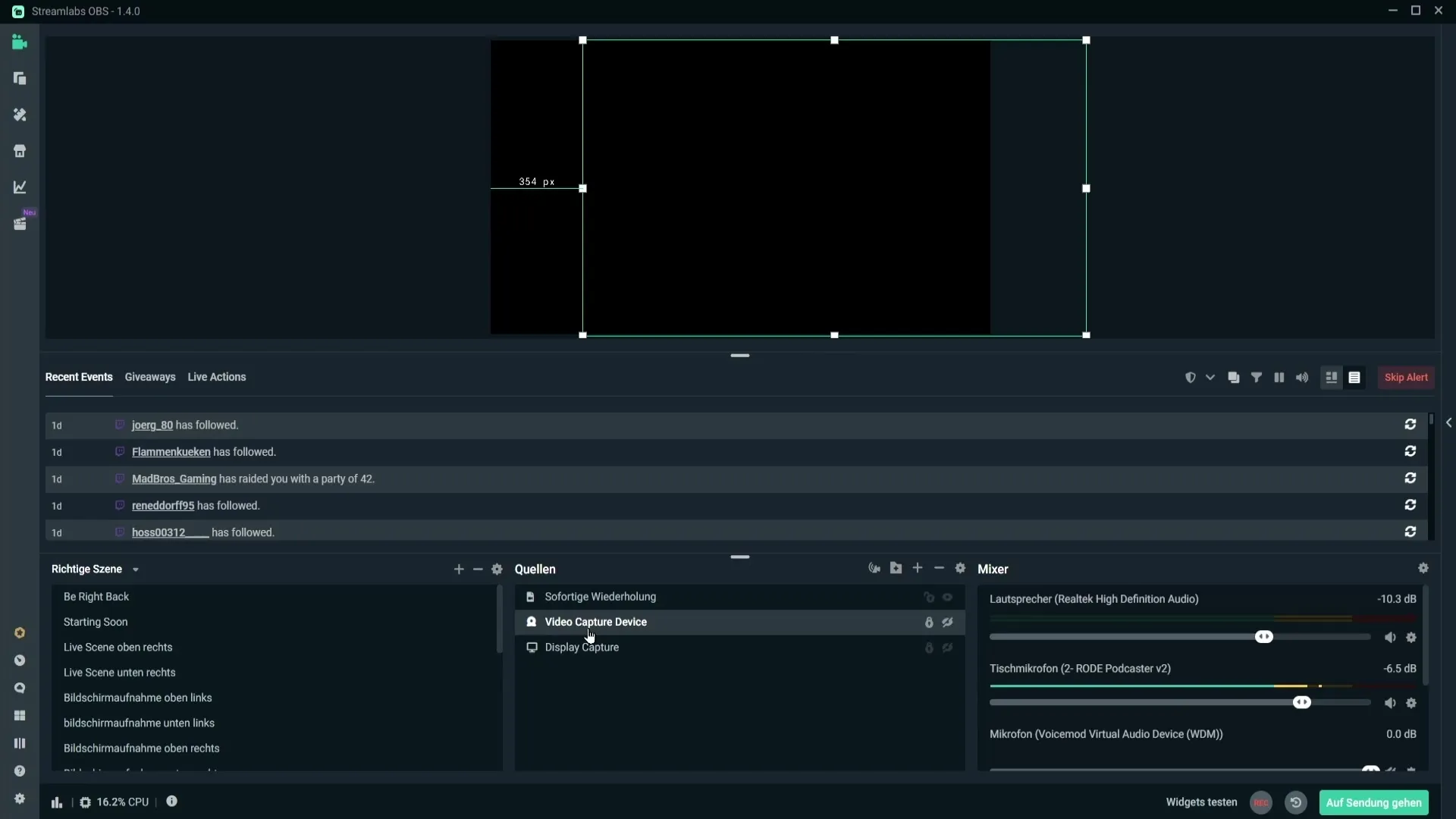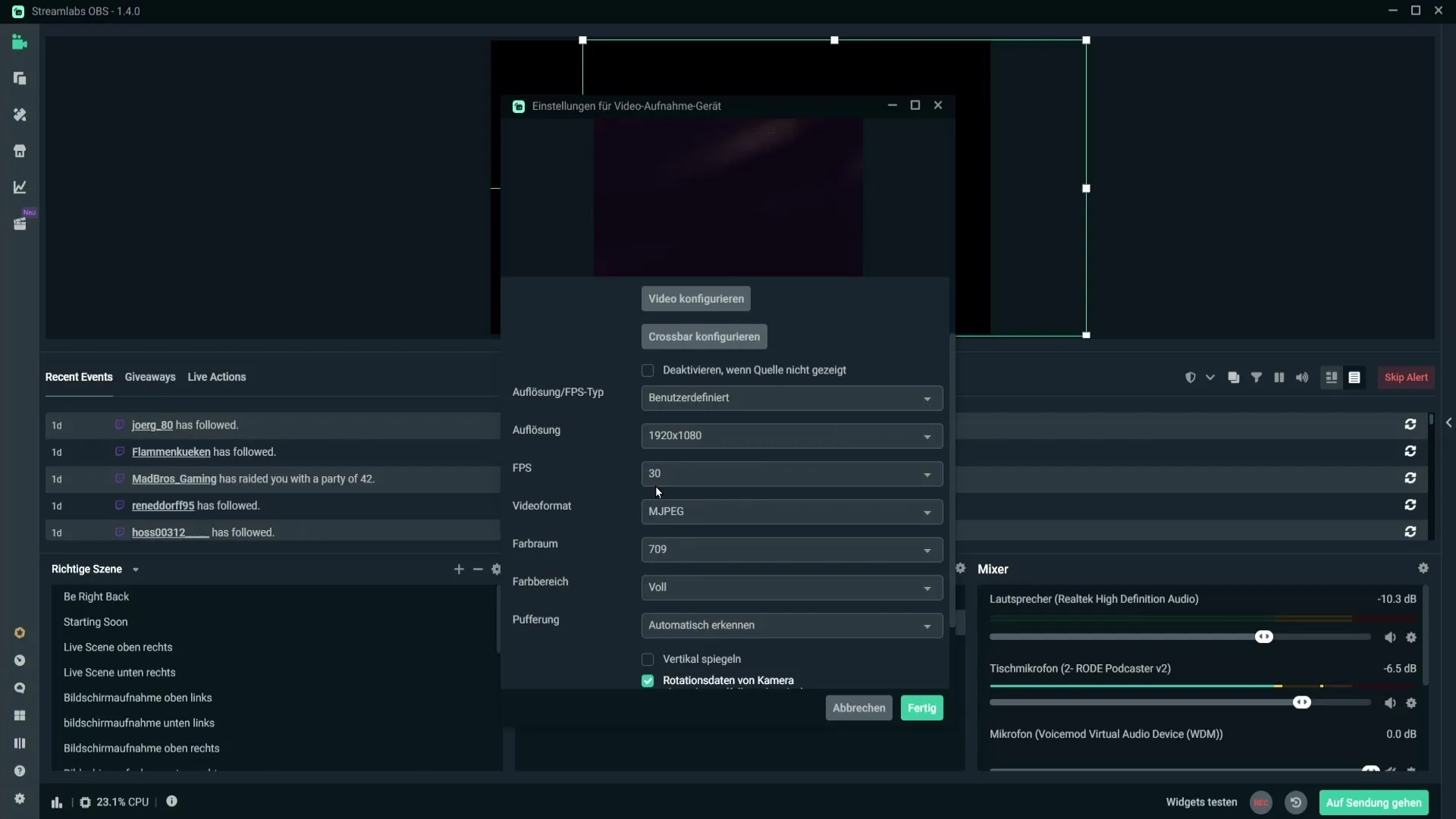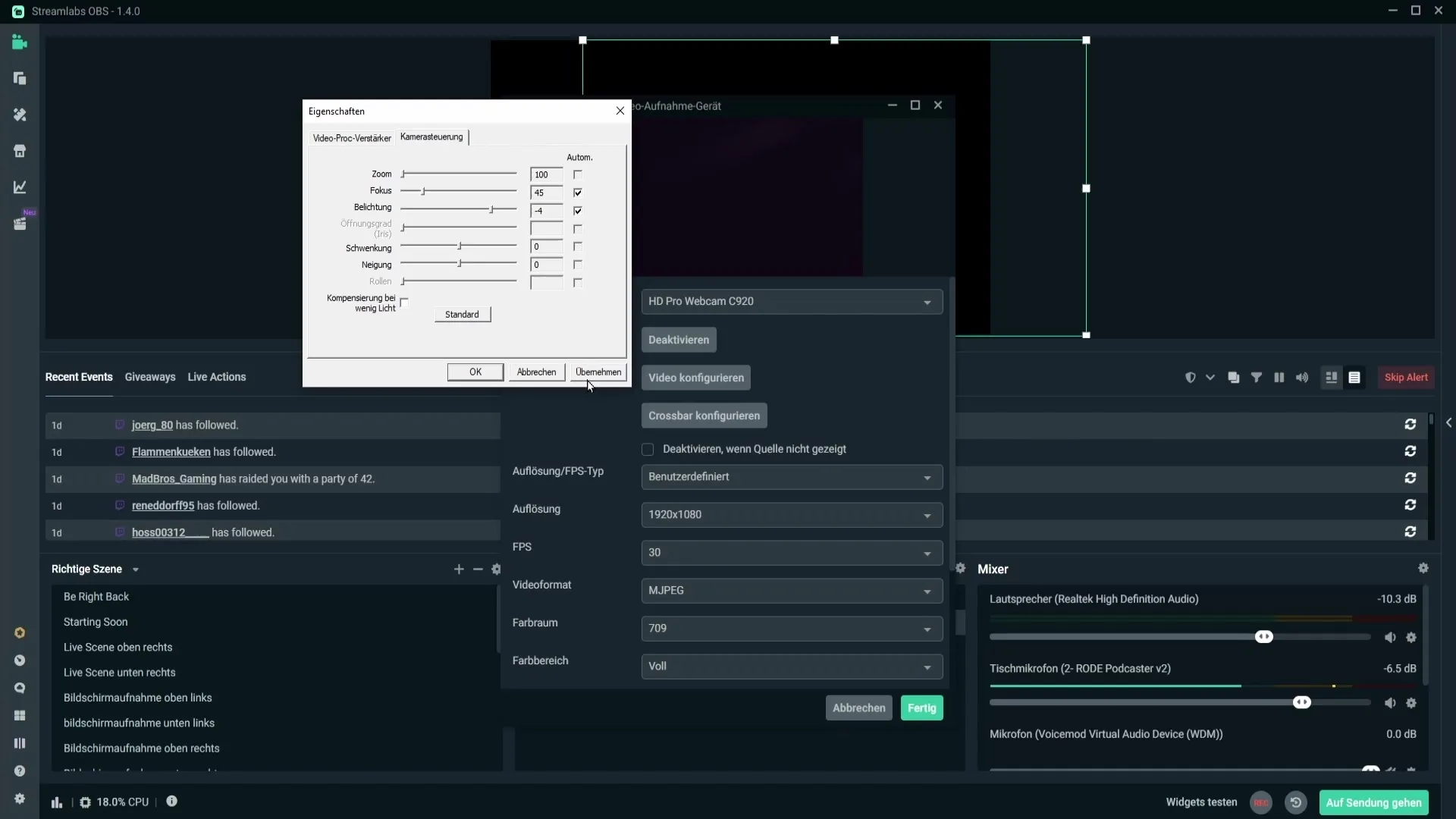When your webcam in Streamlabs OBS is stuttering or freezing, it can be frustrating, especially when you are live streaming or creating video-based content. Fortunately, there are a number of effective solutions you can try to significantly improve the quality of your webcam stream. In this guide, we will show you step by step how to solve the most common issues with stuttering webcams.
Key Insights
- Check the webcam settings and select the correct resolution.
- Make sure the FPS (Frames Per Second) are properly configured.
- Use the appropriate video format and test the camera control settings.
- Sometimes a simple reset of the settings can help.
Step-by-Step Guide
To fix your webcam problems, follow the steps below.
Step 1: Adjust Webcam Settings
Open the webcam source settings in Streamlabs OBS. Right-click on the webcam source and select "Properties." Check the resolution setting here. It is important that this matches the capacity of your webcam. For many Logitech webcams, such as the C920, you can check which maximum resolution is supported. Settings such as 1080p or 720p are common and should be selected accordingly.

If you find that the resolution is set to 720p, change it to 1280 x 720. If you continue to experience problems, try lowering the resolution further to improve performance. Sometimes resetting the resolution to the original value can be helpful if you have been experimenting.

Step 2: Adjust FPS
The Frames Per Second (FPS) of your webcam can have a significant impact on the smoothness of your stream. In the same webcam properties, you can check the FPS and ensure they are properly set. A common setting is 30 FPS. If the problem persists, also try the 29.97 NTSC option to see if this makes a difference.
If you still see signs of stuttering, you can also configure the highest possible FPS and test whether this improves your webcam's performance.
Step 3: Set Video Format
The video format is another crucial factor that can affect your webcam's performance. In the webcam properties, you should check the video format manager. Make sure the format is set to MJPEG as this is the best choice for many webcams. Test the webcam again after making this setting.
Step 4: Check Camera Control
Another important area to check is camera control. Click on "Configure Video," and a new window will open. Here you can make various settings. Uncheck the box for "Compensate for Low Light" to see if this resolves the issue. Remember to click "Apply" and save the changes.

If the problem persists, you should check other options on this list, especially "Auto" and the focus settings. Sometimes turning off these functions can make the webcam run more smoothly.
However, it is advisable to keep the autofocus enabled as manual focusing can cause the webcam to no longer focus when you move beyond the frame.
Step 5: Final Adjustments and Testing
If all the above steps have not solved the problem, you could uncheck the focus box and test the webcam again. Often, a simple reset of the settings leads to a smoother image. Remember to save after each change and test the webcam again.
Summary
If your webcam is lagging in Streamlabs OBS, faulty settings are often the cause. By checking the resolution, FPS, video format, and camera control, you can ensure that your webcam works smoothly. Keep the recommended settings in mind and test your webcam regularly for the best performance.
Frequently Asked Questions
What to do if my webcam continues to lag?Check all settings mentioned earlier and test different combinations.
How do I adjust the resolution of my webcam?You can select the resolution in the webcam properties; make sure it matches the specifications of your webcam.
What FPS should I use for my webcam?A setting of 30 FPS is common, but also try 29.97 NTSC and the maximum available FPS of your webcam.
What is the ideal video format for my webcam?The MJPEG format is a commonly recommended option for high performance.
Why is focus important on my webcam?Focus allows for sharp images; however, you can disable automatic focus if it causes issues.


